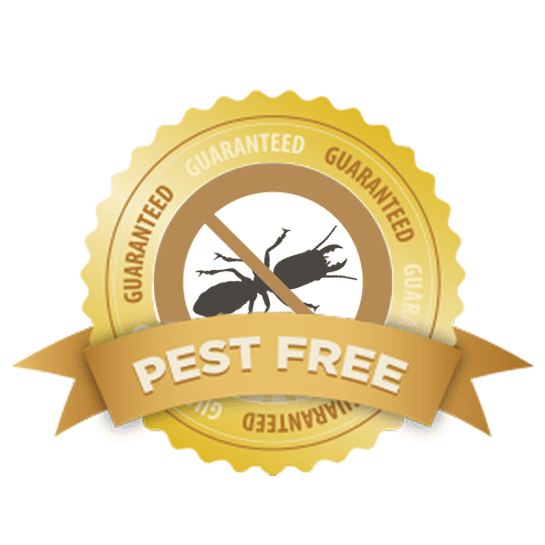A1 Pest Control Charlotte NC Bed Bugs - Specialist Extermination Services
A1 Pest Control Charlotte NC Bed Bugs - Specialist Extermination Services
Blog Article
Bed Insect Treatment Break Down: Comparing Chemical Vs. Non-Chemical Solutions
In the realm of pest control, specifically when taking care of the consistent issue of bed pests, the selection in between chemical and non-chemical treatment services can be a critical one. Both techniques use unique advantages and disadvantages, affecting elements such as efficiency, security factors to consider, and overall expense. By examining the nuanced details of each method, a clearer understanding of which course to go after in attending to a bed bug infestation can be attained.
Efficiency of Chemical Therapies
Chemical treatments for bed pest invasions have actually been extensively recognized for their powerful and quick efficacy in removing these parasites. When thinking about the performance of chemical therapies, it is important to understand that they can supply a complete and fast remedy to a bed pest problem. Expert exterminators frequently rely upon pesticides to target bed pests at various stages of their life process, consisting of fairies, eggs, and grownups. These chemicals normally work by interfering with the bed insects' nerves, leading to paralysis and eventual death.
In addition, chemical therapies have the benefit of supplying residual effects, implying that they can remain to eliminate bed pests even after the initial application. This recurring activity is especially helpful in combating any potential re-infestations. Additionally, the quick action of chemical treatments can bring relief to individuals encountering serious bed bug infestations, permitting them to restore control of their living rooms quickly.
Security Problems With Chemical Solutions
One important aspect that calls for careful factor to consider when utilizing chemical solutions for bed bug therapy is ensuring the security of owners and the setting. Direct exposure to particular chemicals utilized in bed pest therapies can lead to breathing issues, skin irritation, or various other adverse responses, especially in people with pre-existing problems or sensitivities.
Additionally, the ecological impact of chemical services is one more significant factor to consider. Some chemicals utilized in bed insect treatments might be harmful to helpful pests, wild animals, and ecosystems if they seep into the dirt or water supply. It is vital to use chemical therapies carefully, complying with security guidelines, and taking into consideration less harmful choices to reduce these risks and make sure the secure and effective management of bed bug invasions.
Advantages of Non-Chemical Approaches
Considering the prospective safety concerns and environmental effect connected with chemical remedies for bed bug therapy, exploring non-chemical techniques offers an encouraging option with several distinct advantages. Non-chemical treatments are environmentally pleasant, as they do not contribute to air or water pollution, making them a lasting selection for parasite control.
Additionally, non-chemical solutions can be efficient in targeting bed pests, consisting of hard-to-reach areas where chemical treatments might not penetrate. Approaches such as warm treatment, vacuuming, heavy steam cleaning, and bed mattress encasements supply extensive elimination without making use of damaging chemicals. Additionally, non-chemical approaches can be much less disruptive, needing marginal prep work and enabling for quicker reentry right into dealt with areas. Overall, choosing non-chemical bed pest therapy approaches not only focuses on safety and security and environmental defense however likewise makes sure effective and detailed parasite control.
Limitations of Non-Chemical Treatments

Furthermore, non-chemical therapies commonly call for multiple applications to accomplish effective eradication. This can be lengthy and might not constantly guarantee total elimination of all bed insects and their eggs, particularly in hard-to-reach or surprise locations.
Moreover, the success of non-chemical therapies heavily relies upon correct application and thoroughness, which can be testing for individuals without specialist proficiency. Insufficient application of non-chemical methods may cause incomplete removal, bring about persistent invasions and the demand for additional treatments.
Consequently, while non-chemical therapies have their benefits, it is necessary to recognize these restrictions and consider them when figuring out one of the most reliable approach for managing bed bug infestations.
Cost Comparison: Chemical Vs. Non-Chemical Options
Given the limitations related to non-chemical therapies, a vital element to assess in the context of bed bug management is the cost comparison in between chemical and non-chemical options. Chemical therapies generally involve the application of pesticides by experts, which can vary from $250 to $900 per area, relying on the extent of the invasion and the dimension of the location to be treated. In comparison, non-chemical therapies like warm therapy or heavy steam can be extra expensive, with costs ranging from $1,000 to $6,000 for a whole home. While the first expense of chemical treatments might appear reduced, numerous therapies may be required to fully remove the problem, potentially increasing the overall price. On the other hand, non-chemical options may provide a more green and lasting remedy, although they can be cost-prohibitive for some people. Inevitably, when taking into consideration the expense of bed bug therapy choices, it is crucial to weigh the upfront costs against the effectiveness and long-lasting sustainability of the selected approach.
Conclusion

Considering the potential security worries and environmental effect linked with chemical solutions for bed insect therapy, discovering non-chemical methods offers a promising option with a number of distinct benefits.Offered the restrictions connected with non-chemical therapies, an important element to review in the context of bed pest administration is the price contrast between chemical and non-chemical alternatives. In comparison, non-chemical treatments like heat therapy or vapor can be extra pricey, with costs varying from $1,000 to $6,000 for a whole home. While the initial expense of chemical therapies might appear reduced, several treatments Related Site may be needed to totally eradicate the invasion, possibly enhancing the general cost.In conclusion, when comparing chemical and non-chemical bed bug treatment choices, it is important to think about efficiency, safety and security, benefits, limitations, and cost.
Report this page